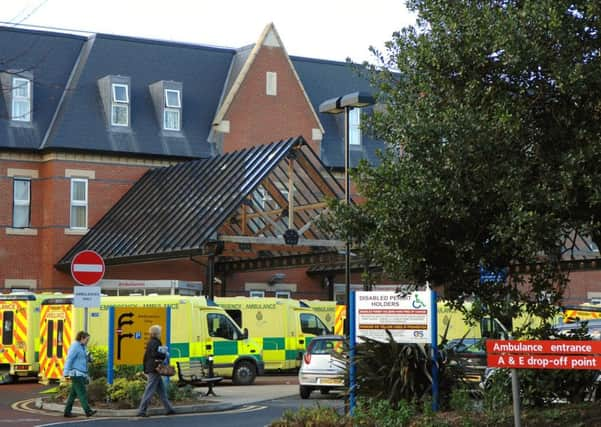Hospital boss hits back at union trolley logjam claim


Paramedic crews are waiting up to six hours to hand over patients to hospital casualty staff in the region, the equivalent of losing almost 10 ambulances a day, according to a trade union.
Figures released by the GMB, which represents many ambulance staff, show that on one day alone – last Monday – more than 300 crews in the North West waited for longer than an hour to book patients into A&E.
Advertisement
Hide AdAdvertisement
Hide AdThe Government target for handovers is 15 minutes and yet in two instances on that day paramedics were kept waiting for six hours.
However, health chiefs in Wigan say turnover times are falling in the borough’s healthcare providers.
A spokeswoman for Wrightington, Wigan and Leigh NHS Foundation Trust said: “The standard for ‘Notification to Handover’, or turnaround times, is set nationally at 15 minutes.
“This measures the time taken from the point that the ambulance crew advise us of their arrival, to the point when their equipment is handed back to them and they are free to prepare for their next call.
Advertisement
Hide AdAdvertisement
Hide Ad“In January 2015 our average handover time was 15 minutes and 48 seconds. Over the past 12 months this time has been reduced to 14 minutes and 54 seconds.
“In the year April 2014-March 2015 69.82 per cent of all ambulances were turned around in less than 15 minutes. This figure increased to 70.56 per cent for the following year (April 2015-March 2016).
“The work we have carried out with our partner organisations - NWAS, Wigan and Borough CCG, Bridgewater and 5 Boroughs - has helped and supported a reduction of 4.4 per cent of ambulance attendances over the same time periods.”
Union officials, however, say staff are now at “breaking point” as they kick their heels in hospital corridors anxious to get back out on the road saving lives.
Advertisement
Hide AdAdvertisement
Hide Ad“Ambulance staff have seen a significant rise in calls in the past months, especially those with serious and life-threatening conditions,” said regional organiser Lisa Ryan.
“Those calls are now being stacked within control rooms due to no vehicles being available to send.
“Staff are now at breaking point, increasingly frustrated hanging around hospital corridors knowing that patients in the community are waiting for their help.
“They should not be expected to look after patients in hospital corridors while people suffer in the street.”
Advertisement
Hide AdAdvertisement
Hide AdIt is claimed the delays are having a knock-on effect on ambulance response times for the most critical 999 calls.
Figures produced by the GMB show around one third of all life-threatening “Red” call-outs in the region are not being reached within the Government target time of eight minutes.